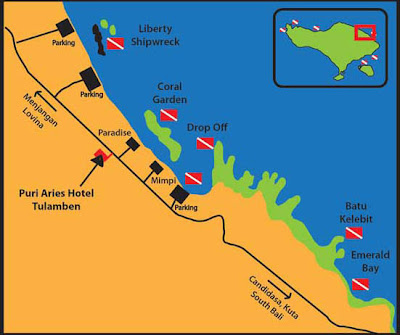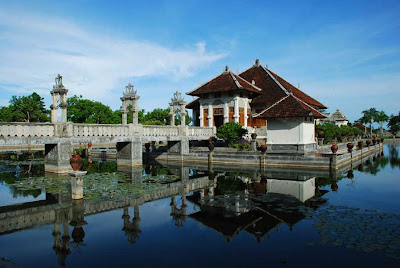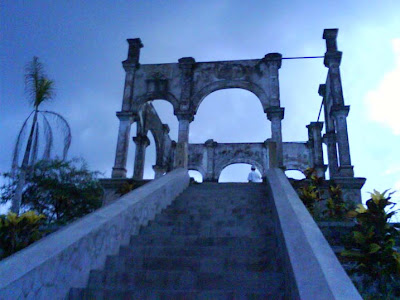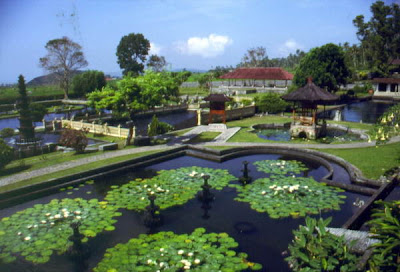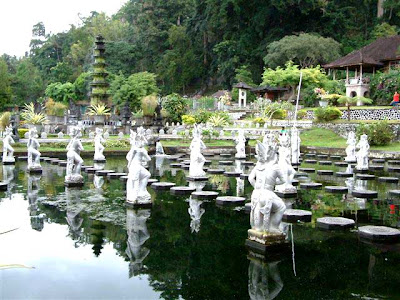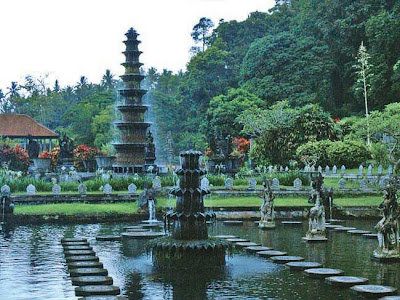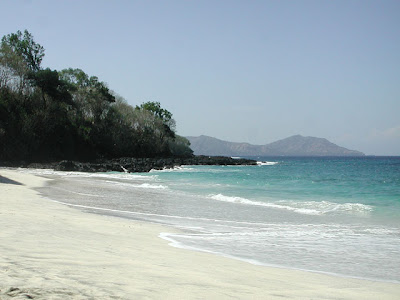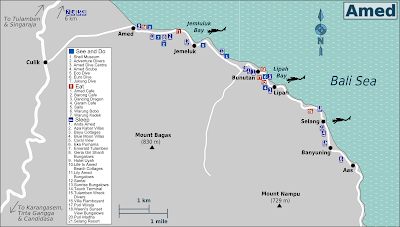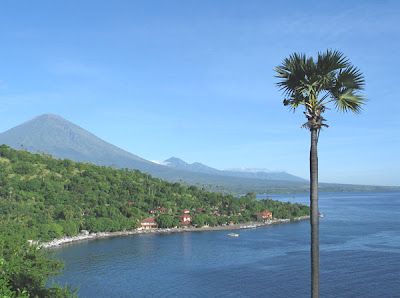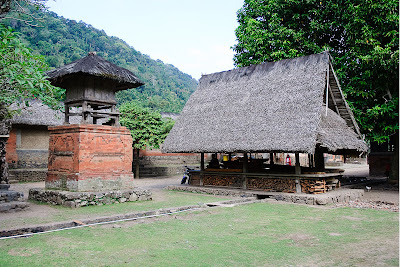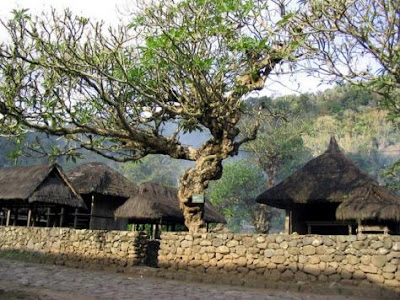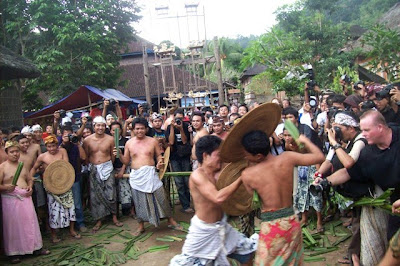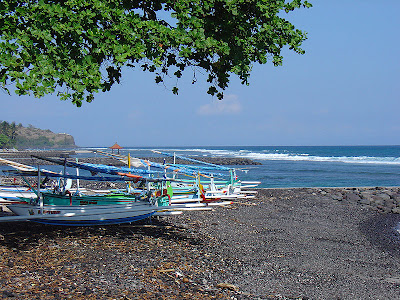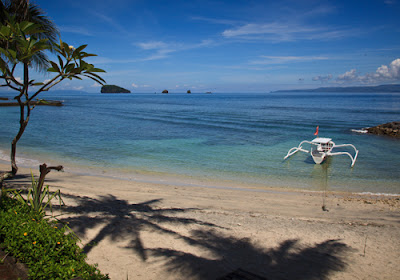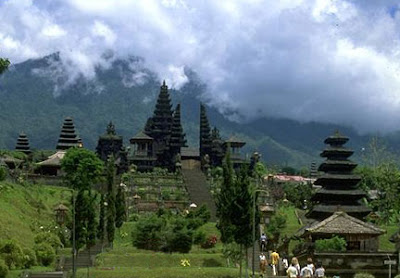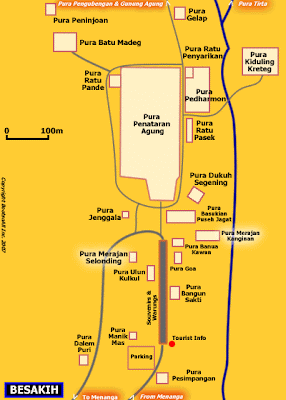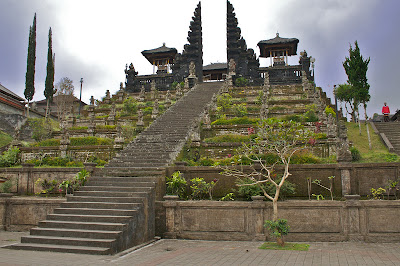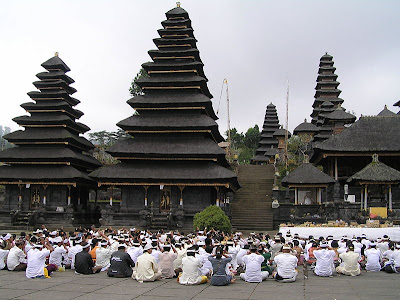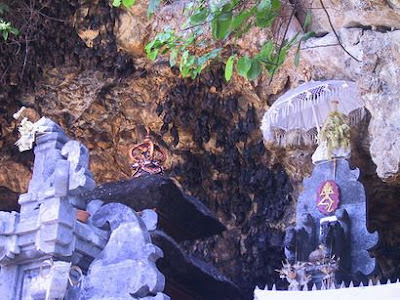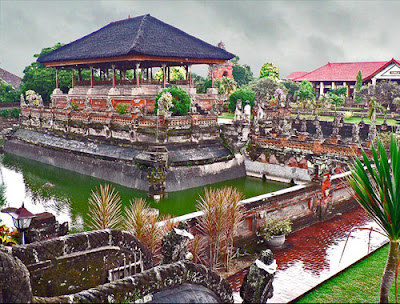The villages of Kintamani and Penelokan give a view of the active Mount Batur and its lake. Seven miles in diameter and sixty feet deep, the caldera of Batur is pretty impressive. From Penelokan, a road lead to Kediasan on the shores of the lake where boats can be rented to cross over to Trunyan.
 |
| Lake Batur View |
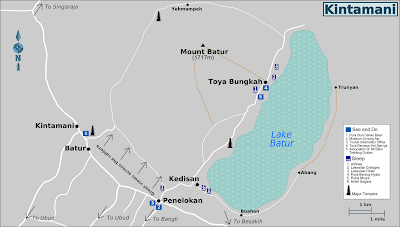 |
| Kintamani Map |
Climbing Mount Batur
A climb to the summit of Mount Batur - 1,700 metres and still an active volcano - to watch the sunrise is a great experience for more energetic travellers. This is an easy climb of about 2 hours, and local guides abound. You do not need to be in peak physical shape to complete this trek. Which parts of the mountain are safely accessible change according to local volcanic activity.
 |
| From Top of Mount Batur |
Trunyan is an ancient village in Bali, inhabited by people who call themselves "Bali Aga" or old Bali. They live in ways that are much different from other Balinese. In Trunyan, the temple Puser Jagat (Navel of the Universe) has an unusual architecture and stands under a massive banyan tree. Instead of cremating their corpses, the Bali Aga simply place them under this banyan tree. The odor of death is mysteriously masked by a special arboreal fragrance emitted by the banyan tree.
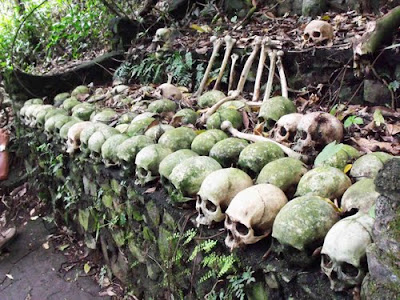 |
| Trunyan |
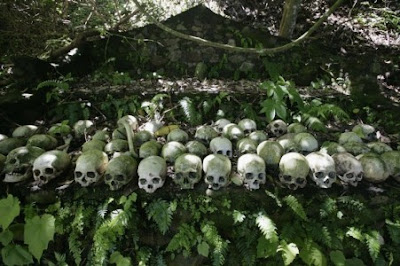 |
| Trunyan |



